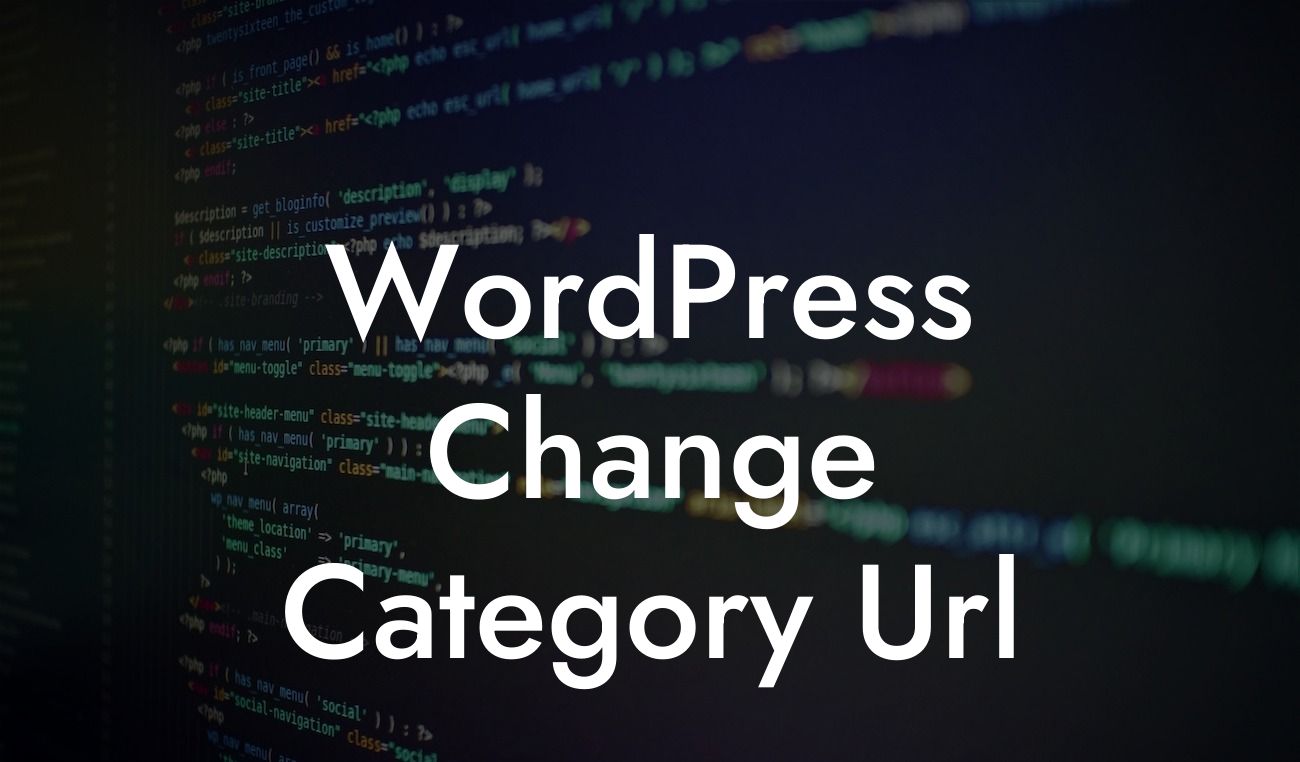WordPress is a powerful platform that empowers small businesses and entrepreneurs to create stunning websites. However, there are times when the default settings and structures don't align perfectly with your business needs. One common requirement is the need to change the category URL on your WordPress website. In this guide, we will walk you through step-by-step instructions on how to accomplish this task. Say goodbye to cookie-cutter solutions and embrace the extraordinary as we show you how to elevate your website's performance and make it truly yours.
First, let's understand why changing the category URL is important for your small business or entrepreneurial website. When you create a category in WordPress, it automatically creates a URL structure for that category. However, this default structure may not be ideal for your SEO strategy, branding, or user experience. That's where customizing the category URL comes into play.
To change the category URL, follow these simple steps:
1. Login to your WordPress admin panel.
2. Navigate to the "Posts" tab and click on "Categories."
Looking For a Custom QuickBook Integration?
3. In the categories section, you will see a list of existing categories. Hover over the category you want to change and click on the "Edit" option.
4. On the category edit page, look for the "Slug" field. This is where you can change the category URL. Make sure to choose a relevant and meaningful URL slug that represents your category accurately. Note that the slug should be all lowercase, with no spaces and special characters, as it will be part of the URL.
5. After making the necessary changes, click on the "Update" button to save your changes.
Remember, changing the category URL may affect the existing links pointing to that category. It is crucial to set up proper redirects to ensure a seamless user experience and retain the SEO value of your website. You can use WordPress plugins like "Redirection" or configure redirects through your website's .htaccess file.
Wordpress Change Category Url Example:
Suppose you have a photography website, and one of your categories is "Landscape Photography." By default, WordPress assigns a URL like "yourwebsite.com/category/landscape-photography" to this category. However, you want to have a cleaner and more concise URL like "yourwebsite.com/landscape-photography." By following the steps mentioned above, you can easily change the category URL to align with your branding and create a better user experience.
Congratulations! You have successfully learned how to change the category URL in WordPress. By customizing your category URLs, you are taking control of your website and enhancing its SEO potential. Don't stop here, though! Explore other informative guides on DamnWoo to further elevate your online presence. And why not try one of our awesome WordPress plugins specifically crafted for small businesses and entrepreneurs? Take your website to the next level of success with DamnWoo.
Remember to share this article with others who might find it helpful. Together, let's empower small businesses and entrepreneurs to achieve their digital goals.
Note: Please keep in mind that changing the category URL should be done cautiously, considering the potential impact on your website's SEO and any existing links.













